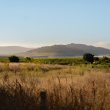City expands its alternative fuel program
In 1985, the Tucson (Ariz.) Department of Operations began an Alternate Fuel Vehicle Program to simultaneously address the issues of energy conservation and environmental protection. Since then, the city’s fleet has grown to include 153 CNG-operated vehicles, ranging from dump trucks, light trucks and utility trucks to vans and sedans.
The program was implemented in conjunction with Las Vegas-based Southwest Gas, the local natural gas utility. Initially, it consisted of converting four gasoline-powered vehicles to bi-fuel operation, capable of running either on gasoline or compressed natural gas (CNG). The utility provided access to its CNG fueling station, donated all necessary CNG conversion equipment and funded the labor costs required to convert the vehicles.
In the mid to late 1990s, vehicle manufacturers began marketing improved factory-authorized CNG conversion systems in sedans and light trucks. The new systems improved vehicle performance and resulted in longer service lives than the previous conversions of gas-powered vehicles. As a result, between 1995 and 2000, the Department of Operations added 118 CNG-operated units, and it has ordered six more. Most recently, Tucson has focused on acquiring larger units such as six- and 10-yard dump trucks.
The city also has been replacing its diesel-powered mass transit fleet with CNG-operated buses. Since 1989, it has purchased 50 CNG dedicated buses and 47 dual-fueled buses (which use a combination of CNG and diesel fuel). The city is retiring diesel buses as it takes delivery of CNG units, and, by 2003, its fleet will consist only of alternate fuel buses.
While CNG-powered vehicles usually cost more to purchase than gasoline- and diesel-powered vehicles, Tucson has found that CNG is less expensive than gasoline and diesel fuel. Additionally, the money saved from buying CNG offsets the cost of purchasing new CNG vehicles and training mechanics to maintain them.
As Tucson continues to convert its fleet, it must add fueling facilities. Its first station, featuring four 7,000-scfm compressors with 60,000 cubic feet of storage capacity was built in Southwest Tucson in 1995. The Department of Operations is adding a facility in East Tucson, and another is planned for the Northwest area of the city.
The broad geographical distribution of those stations will result in more convenient citywide access to fuel, thereby increasing CNG usage. “An important component of our CNG expansion plan is that it must begin to benefit private owners of CNG-operated vehicles,” says David Burns, the fleet service administrator for Tucson’s Department of Operations. The city is accepting proposals from private firms to modernize, operate and maintain the existing fueling facility, and it specifically wants to add fuel dispensers that will be reserved exclusively for the use of private CNG vehicle owners.
Tucson’s continued support of CNG is part of its effort to create a sustainable and livable future. Residents have expressed commitment to clean air and quality water and to the efficient use of natural resources. The use of CNG contributes to meeting those goals.




















